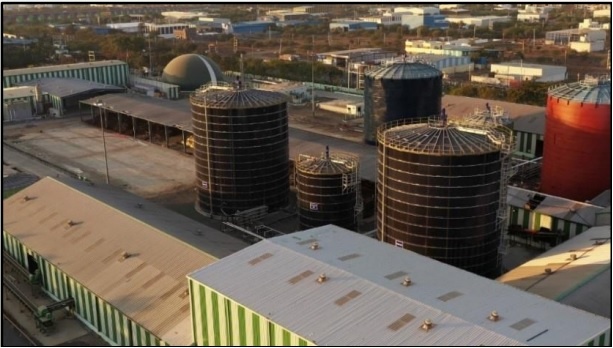In the heart of Indore, a city renowned for its cleanliness, a quiet revolution is brewing. The Indore Municipal Corporation (IMC) has achieved something remarkable: a plant that takes the waste produced by thousands of households and transforms it into clean, green energy. The GOBARdhan plant, inaugurated by Prime Minister Narendra Modi in 2022, is Asia’s largest municipal solid waste-based facility, producing an impressive 17,000 kilograms of Bio-CNG every day. But this is not just a technological marvel; it’s a story of human determination, collective effort, and the pursuit of a greener future.
The plant is part of a broader mission under the Galvanizing Organic Bio-Agro Resources Dhan (GOBARdhan) initiative to turn waste into wealth. Launched in 2018 as a key component of the Swachh Bharat Mission (Grameen), GOBARdhan envisions converting organic waste—animal manure, crop residue, and kitchen scraps—into renewable energy and organic manure. This ambitious scheme aligns with Prime Minister Modi’s vision for a circular economy, where every resource is reused, and nothing goes to waste.
In line with this mission, the Swabhav Swachhata Sanskaar Swachhata (4S) campaign has been launched to celebrate the 10th anniversary of the Swachh Bharat Mission. Running from September 17 to October 2, 2024, the campaign is aligned with the annual Swachhata Hi Seva tradition. It serves as a precursor to Swachh Bharat Diwas, celebrated on Mahatma Gandhi’s birth anniversary.
In Indore, the Prime Minister’s vision comes alive every day. Segregated organic waste, collected from homes and markets across the city, arrives at the plant in the early hours of the morning. Teams of workers—operators, electricians, fitters—operate the complex machinery that transforms this waste into Bio-CNG. The process is an intricate dance of technology and human labor: waste is screened, pulped into slurry, and fed into large anaerobic digesters. Within these digesters, microorganisms go to work, breaking down organic material to produce biogas. The resulting gas, rich in methane, is compressed into Bio-CNG, a cleaner alternative to fossil fuels.
The Indore GOBARdhan plant, with its fully automated systems, has quickly become a shining example of how technology can transform waste management into an eco-friendly process. Beyond generating Bio-CNG daily, the plant produces over 100 tonnes of high-quality compost, which is supplied to local farms, creating a closed-loop system that supports sustainable agriculture. This not only enhances soil health but also reduces the need for chemical fertilizers, furthering the city’s green agenda.
What makes this facility even more remarkable is its contribution to reducing carbon dioxide emissions. By converting organic waste into energy, the plant prevents an estimated 130,000 tonnes of carbon dioxide from entering the atmosphere each year. This diversion of waste from landfills, where it would otherwise decompose and release harmful methane, helps reduce India’s overall greenhouse gas emissions and contributes to the global fight against climate change.
Safety is a top priority at the plant. Workers, including general laborers, technicians, and quality control teams, are provided with Personal Protective Equipment (PPE) and undergo regular safety drills to prevent accidents. Their coordinated efforts ensure smooth operations, enabling the plant to maintain high yields of both Bio-CNG and compost while adhering to stringent safety and environmental standards.
The success of Indore’s GOBARdhan plant reflects the potential of this scheme to transform rural and urban landscapes across India. The GOBARdhan initiative has registered over 1,300 biogas plants nationwide, with 870 already functional. Each of these plants not only reduces the burden on landfills but also provides a sustainable source of income for farmers, who can sell their waste for processing or use the bio-slurry as high-quality manure. The initiative has also opened doors for rural employment, offering job opportunities in waste management, biogas production, and organic farming.
Moreover, the GOBARdhan initiative is driving the development of CBG/Bio-CNG plants, with 743 such plants registered, of which 106 are functional. While seven plants have been completed, 177 are currently under construction, promising to bolster India’s clean energy infrastructure further. These plants play a pivotal role in the shift toward sustainable transportation and energy, using compressed biogas (CBG)—similar to compressed natural gas (CNG)—to fuel vehicles and support energy security.
The impact of GOBARdhan extends far beyond energy production. By reducing greenhouse gas emissions, the initiative contributes to India’s climate goals, including the targets outlined in the Paris Agreement. It also supports local economies, offering farmers an additional revenue stream while ensuring environmental sanitation in rural areas. The conversion of waste into CBG is vital in India’s broader strategy of reducing reliance on imported natural gas.
Indore’s GOBARdhan plant is just one example of what’s possible when vision, innovation, and community come together. Across the country, similar plants are springing up, fueled by the government’s commitment to the GOBARdhan scheme. The Union Budget 2023 allocated Rs 10,000 crore for 500 new “Waste to Wealth” plants, a move expected to provide a significant boost to India’s clean energy sector.
As India pushes toward a cleaner, more sustainable future, the plant not only showcases the potential of waste-to-energy initiatives but also highlights the broader impact of the GOBARdhan scheme. With more plants under development and significant government investment, the future of clean energy in India looks promising, paving the way for a greener, more circular economy that benefits both urban and rural communities alike.
(Source: PIB and Ministry of Jal Shakti)












